Affiliate marketing is a powerful way to sell insurance products, but success depends on having the right structure and strategy.
If you're already considering affiliate marketing for insurance but aren't sure how to set it up or make it work within an MLM model, this article is for you.
In this article, we will discuss about different steps for How to sell Insurance Products using Affiliate Sales Model in detail.
This Article Contains:
Understanding the Insurance Affiliate Sales Model
Before we explore how to sell insurance products using the affiliate sales model, let's first understand what the model is.
The insurance affiliate sales model is a performance-based marketing approach in MLM. In this model, individuals or businesses promote insurance products—such as health, life, or home insurance, on behalf of an insurance provider or platform.
Using unique referral links or codes, affiliates drive potential customers to apply for or even purchase insurance policies. They earn commissions or a reward when a specific course of action is completed—this could include a lead submission or a purchase.
A Step-by-Step Guide On How To Sell Insurance Products Using Affiliate Sales Model
To sell insurance products using the affiliate model, first you need to create an affiliate program, equip affiliates with marketing resources, and track their performance using affiliate links and analytics. Let’s break this down in detail.
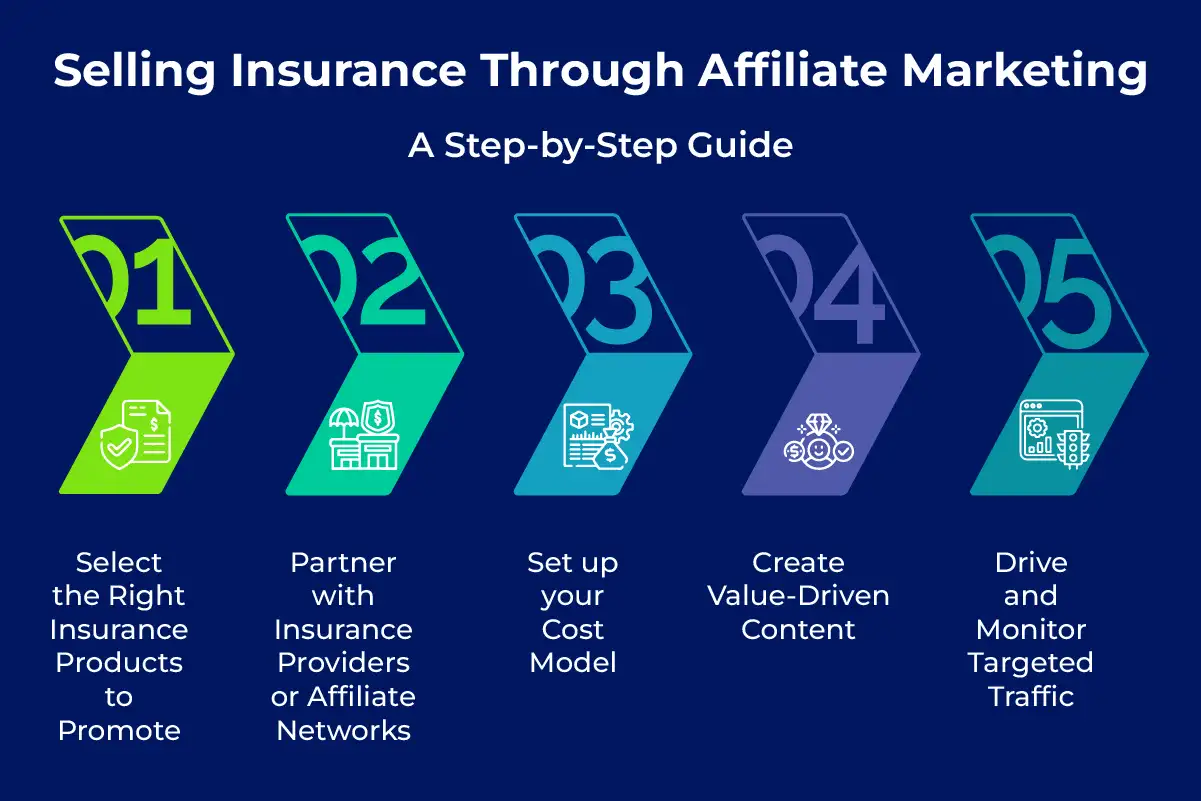
Step 1: Select the Right Insurance Products to Promote
Before you start promoting your insurance products, it's crucial to know that not all insurance products perform equally well in the affiliate space.
Did you know? The basic awareness of life insurance among most Americans is high, yet a lot of citizens don’t have an insurance policy. Plus, many citizens also admit they don’t fully understand how life insurance benefits them.
One major reason behind this gap isn't just affordability or trust—it's misaligned messaging. Many affiliates promote all kinds of insurance products without aligning them with what people need or understand. This leads to
Confusion
Low conversion rates
Wasted effort
To sell insurance products effectively, start by understanding your audience—whether they're young professionals, families, or retirees, their needs will vary. Promote insurance policies that align with their needs. For example, young professionals may be more interested in affordable term life or dental insurance, while families might prioritize health or auto coverage. Tailoring your offerings increases relevance and boosts your chances of conversion.
Step 2: Partner with Insurance Providers or Affiliate Networks
On-demand insurance is becoming increasingly popular as consumers seek flexible, personalized coverage options. This shift in preference creates a unique opportunity for MLM businesses to help insurance brands reach potential customers.
By using digital platforms, MLM businesses can connect consumers with the right policies at the right time—whether through targeted marketing or hosting live online events and webinars. These events allow affiliates to educate and engage potential customers, driving better conversions and fostering trust in insurance products.
To get started, you'll need to partner with trusted insurance brands or join affiliate networks that offer insurance products. These partners typically provide everything you need, such as referral links, marketing materials, and tools to track your earnings. Some even offer training to help you improve your sales.
Before partnering with an insurance provider, it's important to understand how commission management works in MLM. This knowledge will help you set up a fair and effective compensation structure for your affiliates.
Step 3: Choose Your Cost Model
One of the key decisions you'll face is selecting the right cost model for your affiliate network. While you don’t set the cost model for the insurance providers, you’ll need to choose providers whose commission structures align with your business goals and the needs of your distributors. This will determine how your business gets paid and how you earn revenue.
| Aspect | Cost Per Sale (CPS) | Cost Per Lead (CPL) | Revenue Share (RevShare) |
|---|---|---|---|
| When You get paid | After a customer buys a policy | When a user submits a valid lead form | After sale, then recurring payouts as long as the customer stays active |
| Payout Type | One-time, higher commission per sale | One-time, lower commission per lead | Ongoing % of revenue generated from referred customers |
| Best For | Companies seeking high-intent, purchase-ready customers | Companies aiming to fill the top of the funnel with prospects | Companies looking for long-term partnerships and recurring business |
Based on the cost model you choose, you'll also need to define how your distributors get paid. Whether that's a fixed commission per lead (CPL), a one-time payout per sale (CPS), or a share in the recurring revenue from long-term customers.
Step 4: Create Value-Driven Content
If you want to succeed with affiliate marketing, you need to go beyond just product promotions. Today's customers don't respond well to pushy sales, but they want helpful, informative content that guides them in making the right choices.
That's why creating value-driven content is so important. It helps to educate potential buyers, builds trust, and makes the affiliate's job easier. When people find your content helpful, they're more likely to take action—like requesting a quote or buying a policy.
Here are some great types of content you can create:
Blog articles
Explainer videos
Comparison guides
Social media tips
Email series
Webinars or live sessions
Creating this kind of content focused on Social media strategy for MLM companies adds real value for your audience. It makes affiliate promotions feel helpful instead of salesy, which leads to better trust and more conversions.
Step 5: Drive and Monitor Targeted Traffic
Once your affiliate partnerships are in place, the next step is ensuring that the right audience is actually viewing your insurance products. This is where technology, targeted distribution, and automation come into play.
Platforms like Facebook, LinkedIn, Instagram, and YouTube allow you to run highly targeted ad campaigns, where users can be segmented by age, location, income level, and even life events (like recently getting married or having children).
For B2B-focused insurance products, LinkedIn Ads and Google Display campaigns are effective tools to drive traffic from professional audiences to customized landing pages. You can target key decision-makers in relevant industries, ensuring that your ads reach the right audience.
You can leverage your affiliate network to further amplify this effort. Affiliates can help promote your ads or landing pages within their own networks, generating additional leads and extending your reach. Additionally, it’s important to track top direct sales KPIs for your direct selling leaders and adjust your affiliate strategy to optimize results and increase conversions.
Case Studies or Examples of Successful MLM Insurance Affiliate Programs
Studying affiliate sales case studies offers valuable insight into proven commission-based models. Plus, it helps you identify scalable products and strategies that align with your own network-driven approach. Let’s discuss some of the successful MLM programs.
Case Study 1: World Financial Group (WFG): A Proven MLM Success in Insurance
WFG continues to thrive as a leading MLM company in the insurance and financial services domain. With over $1.4 billion paid in commissions in 2024, the company shows strong upward momentum, reflecting both growth and agent success.
WFG empowers independent agents to build businesses by offering financial products and building their own teams. The average earnings for full-time licensed agents highlight the opportunity:
Tier 1 (0–3 years experience): $68,403
Tier 2 (4–7 years experience): $239,950
Tier 3 (8–10 years experience): $753,615
This tiered growth path proves that agents can significantly scale a company’s income over time. With a focus on training, licensing, and entrepreneurship, WFG combines the earning potential of MLM with the credibility of the financial services industry. That is what makes it a standout model for affiliate success.
To streamline and scale affiliate-driven insurance programs, MLM businesses can explore affiliate MLM software designed for performance, tracking, and multi-tier commissions.
Case Study 2: Equis Financial
Equis Financial provides curated solutions for middle-income America and supports improving the financial health of its clients.
They partner with top carriers like Foresters Financial and Americo to provide clients with life insurance, living benefits, and mortgage protection solutions.
It’s quite clear that their wide range of products draws huge attention. Another aspect that helps them stand out is their MLM business model.
When a person joins hands with Equip Financial, the option is not limited to a distributor; the person can create an agency and run it by building a team.
Now, what’s interesting is how Equip Financial supports its agents.
They provide them with access to state-of-the-art applications to enhance operations, quality leads, dedicated support and training, and regular in-person events to continuously expand the network.
Coming to the fees and payout, things are quite simple. Anyone with an insurance license can join as an agent without any initial fees. When they sell a product, they earn commission, which significantly varies as these are third-party products and not in-house.
Besides commission, there are value-based incentives, allowing distributors to advance in rank at the same time.
When a distributor sells their products with a total premium value of $2,500 within 30 days, the company provides them a custom gift and special badge along with the rank of Ignite Producer.
Overall, the company has tied its payouts to ranks, which is a smart way of keeping the agents achieving and full of enthusiasm.
Best Practices: Affiliate Sales Model for Insurance
Selling insurance through insurance affiliate programs is powerful, but success depends on more than just sharing links. As an MLM business owner, you already understand relationship-building. These best practices will help you turn that trust into long-term commission growth.
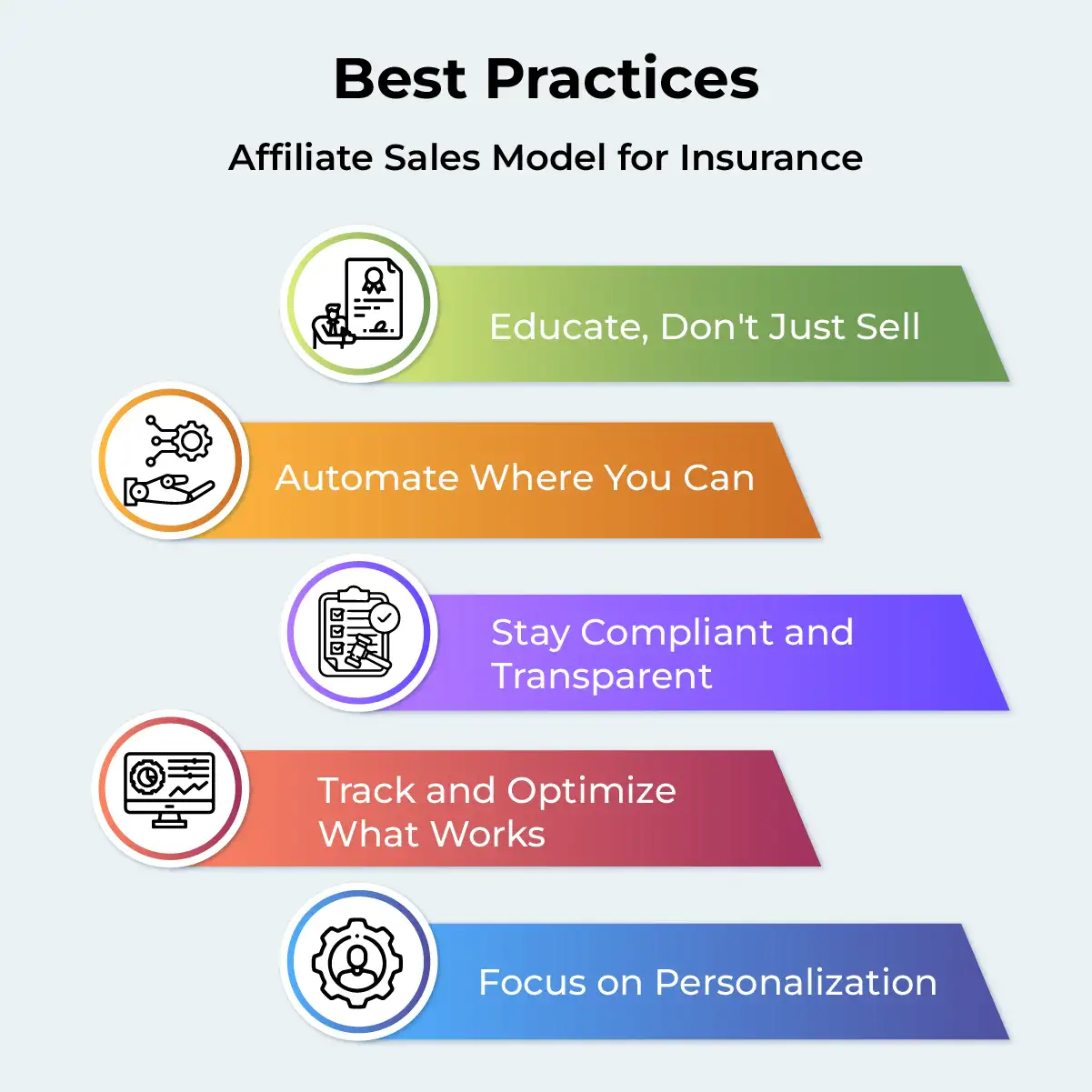
1) Educate, Don't Just Sell
People are skeptical of insurance — they need guidance more than persuasion. Use paid tenancy blogs, videos, and FAQs to break down complex terms and show real-world scenarios. Trust grows when people feel informed, not pushed.
2) Automate Where You Can
Leverage tools like email drip campaigns, lead capture forms, and scheduling tools for social posts. Automation helps you scale your business by keeping leads organized and even allowing relationship-building, and to truly boost productivity, you can utilize some of the top network marketing automation tools.
3) Stay Compliant and Transparent
Insurance is regulated, and transparency builds long-term trust. Always disclose your affiliate relationship, avoid exaggerated claims, and follow the program's approved language and guidelines.
4) Track and Optimize What Works
Use tools like Google Analytics, Bitly, or your affiliate dashboard to see which links, content, and platforms convert best. This helps you double down on what works. Plus, it’s also suggested to monitor the performance of your home page.
5) Focus on Personalization
A personalized selling strategy works especially well in the insurance sector. This is because most people prefer to purchase insurance through an agent they trust or one recommended by family and friends. Personalize your approach — whether it's a tailored email sequence for new leads or a blog post aimed at a specific life stage (like "Best Health Insurance for New Parents"). Personal touches drive higher engagement and conversion.
FAQs
1. Can I sell insurance through affiliate marketing without a license?
Yes, in most cases. If you're only promoting insurance products and referring leads to licensed providers, you usually don’t need a license. But it’s always good to check your local laws or insurance affiliate program rules to be sure.
2. What content types work best to promote insurance as an MLM business?
Content that educates and answers questions works best. Try blog posts, comparison charts, explainer videos, or checklists like “What to Know Before Buying Life Insurance.”
3. How long does it take to start earning commissions?
It depends on your niche, traffic, and the effort you put in. Some affiliates see results in a few weeks, while others may take a few months. Consistency with content and promotion is key.
4. Can I mix insurance affiliate offers with other products in my MLM business?
Absolutely! When relevant and well-timed, offers add value. Platforms like Canva and HubSpot show upgrades contextually, making them feel like solutions, not sales pitches.
5. How can I integrate insurance affiliate programs into my MLM team's sales strategy?
You can align insurance affiliate offers with your team’s existing pitch by positioning them as value-adds or complementary products. Provide ready-made content, training, and marketing assets to help your downline promote these offers effectively while maintaining compliance and consistency across your network.
Disclaimer: Global MLM Software does not endorse any companies or products mentioned in this article. The content is derived from publicly available resources and does not favor any specific organizations, individuals or products.



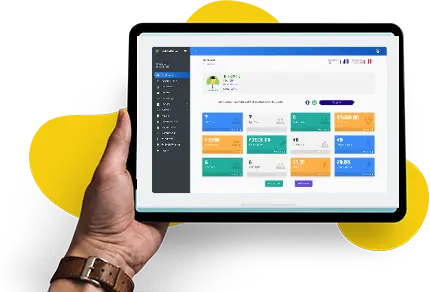
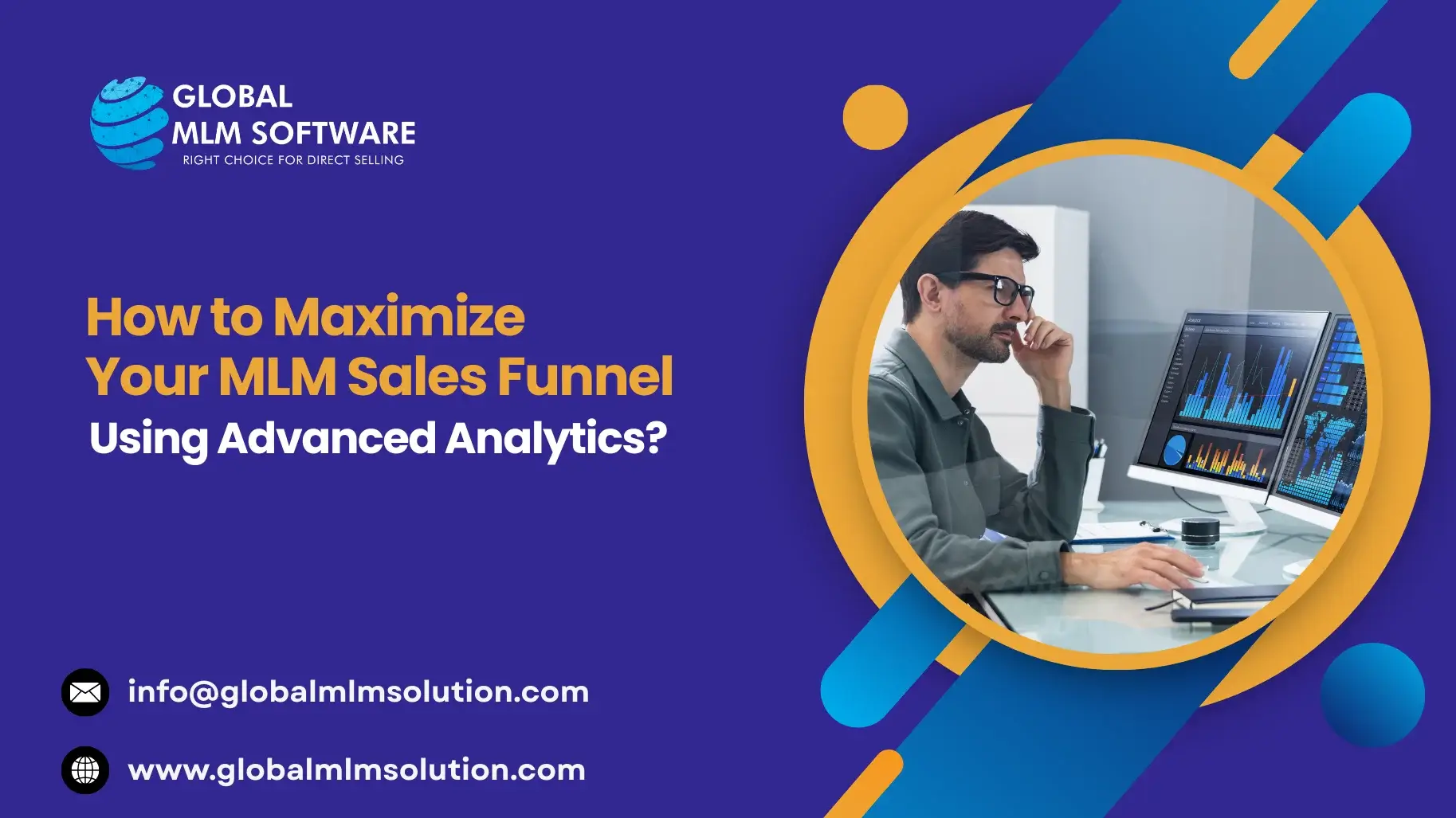
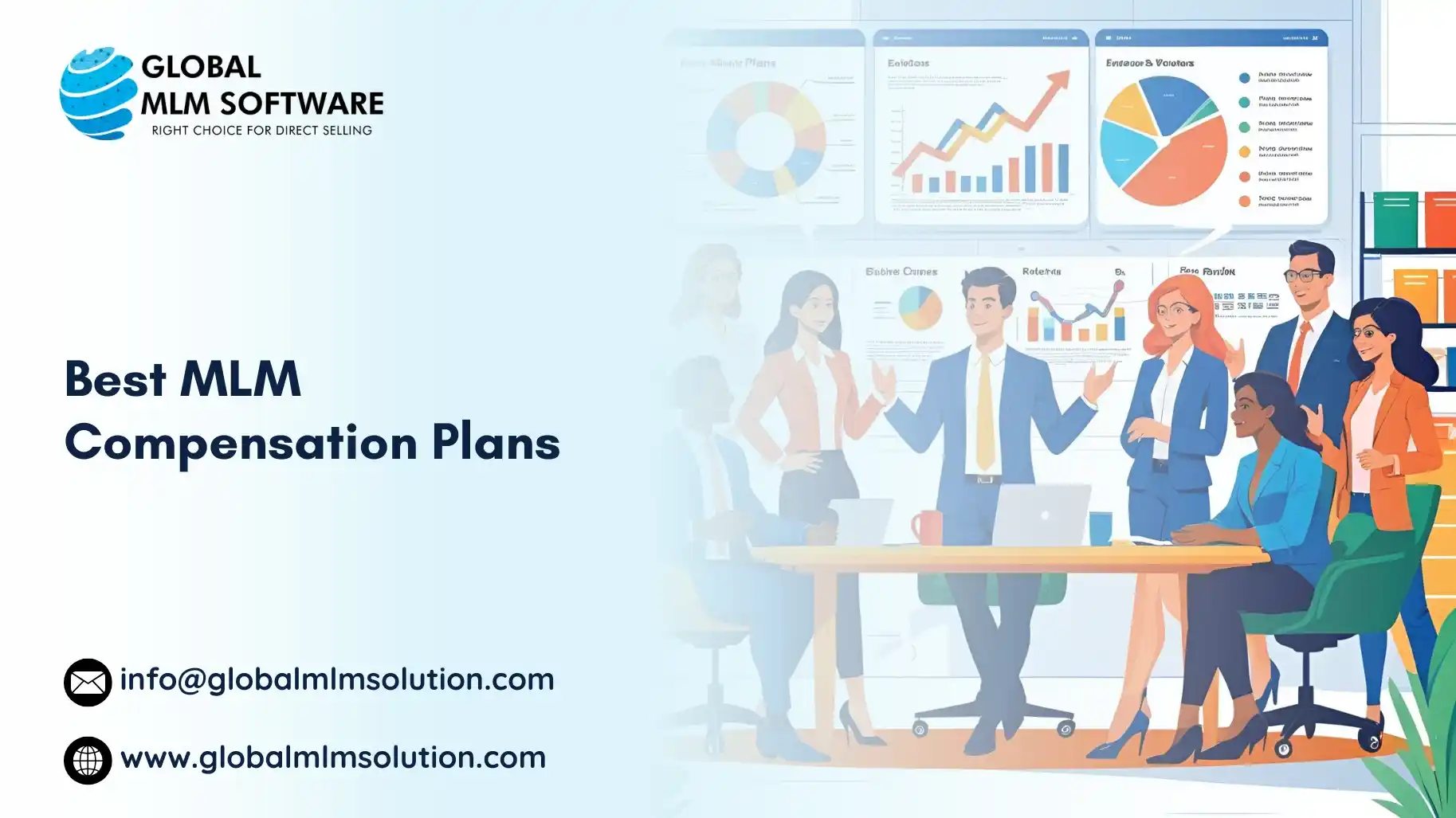
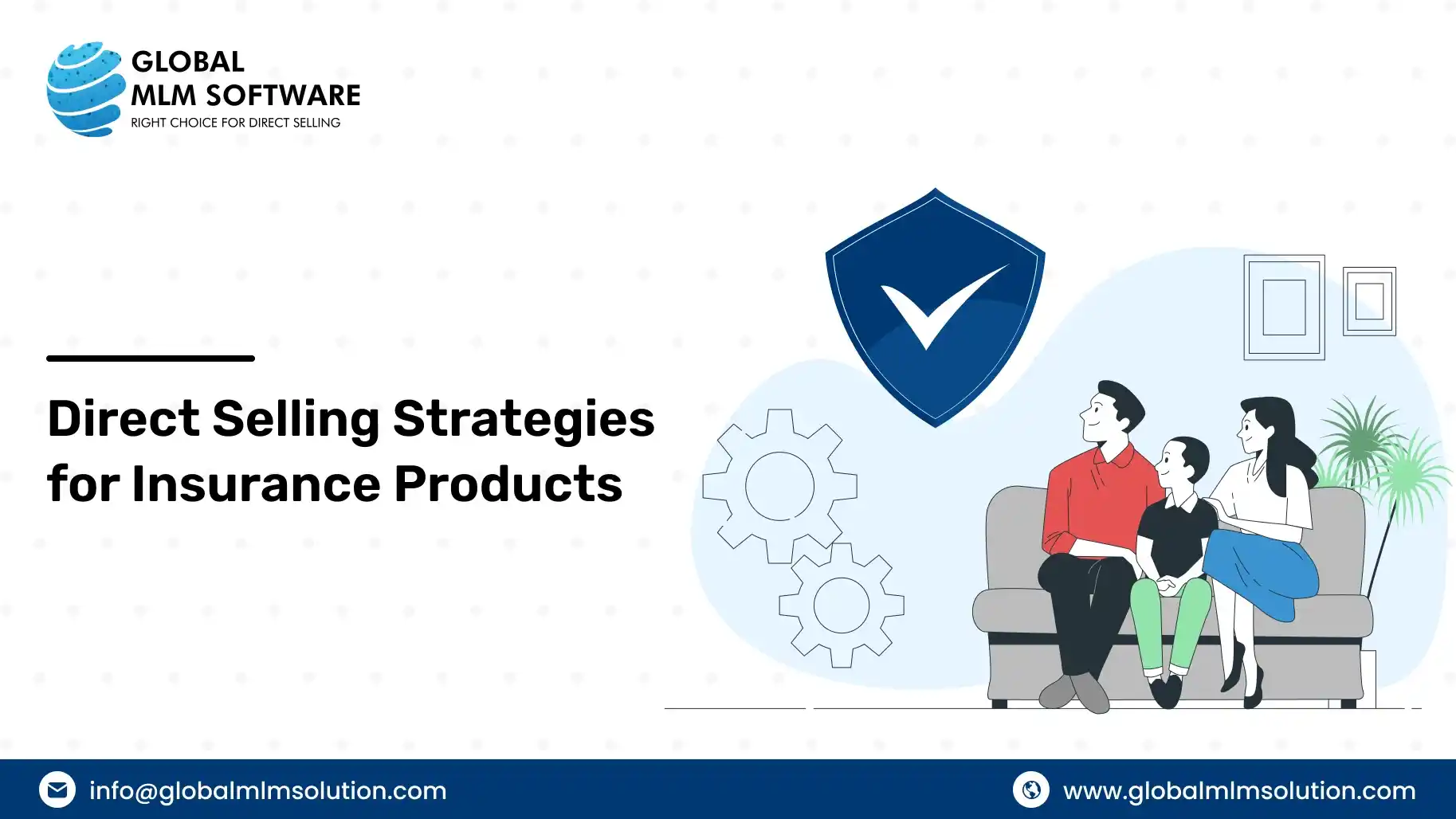


Conclusion
Selling insurance through affiliate marketing can be a great way to earn a steady income. In this article, we covered how to choose the right insurance products, work with affiliate networks, create helpful content, and pick the best commission model for your style.
To grow faster, personalization and automation really help. When you give people content that feels made just for them and use tools to save time, you’ll see better results without extra effort.
Ready to Supercharge Your Insurance Affiliate Business? 🎯
Seamlessly manage leads, monitor affiliate performance, and automate operations to accelerate your business growth like never before.